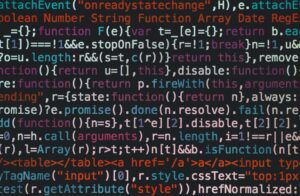
Scripts are present in many of the actions that we perform daily from our computers, they are part of the anatomy of programs, here we will tell you some things about them and what function they perform
What is a script and what utilities can it have
Surely you have heard of the word script or have come across a message on your screen several times indicating that there is a script that has stopped working or some other similar message.
Do you know what scripts are and what are they for? Obviously, most of us do not know the meaning of this term even though we have seen its name more than once.
If you are a programmer you surely know what we are talking about, but if you are an “ordinary citizen” in terms of programming, you will be able to find out what scripts are and what they are for if you continue reading.
We are going to first see what a script is so that we can later know why it is an important element in the functioning of the programs we use daily.

What is a script?
Scripts are behind many of the processes that we carry out on a daily basis from our computers
The term script has more than one meaning, or rather, the meaning is the same only it has different applications.
Script (script) is an English word that can be translated as the script that directs a scene or sequence.
To make it simpler, we could say that in real life a script is made up of a series of instructions that must be followed by individuals who are part of a film, theater, or television program.
If we transfer this to computing, the meaning is the same only that it applies to something that has to do with a programming code.
In programming, the script contains instructions written in code that are used to execute various functions within a program.
In short, the script is the one that gives the orders about what a certain part of a program should do, these orders are always the same, that is, they correspond to actions that are repeated within the program and are executed sequentially.
What functions can a script have?
Scripts can handle different events, for example when reading a page they can handle certain events such as clicking on a link, moving the mouse, changing the size of the browser window, loading an image, etc.
A script is the “script” that a part of the program must follow to carry out the process for which it was created
Thus, when we visit a website and we see a button that serves a certain function, such as going to a shopping site, downloading a file, etc., which makes that button fulfills the function that has been assigned to it. it’s a script that was specifically programmed for that function.
The same applies when we are using the browser and we want to change the size of the viewing window, the fact of clicking with the mouse in the corner that indicates the change in the size of the window is an action that is directed by a script that was programmed to perform that function (respond to a mouse click by shrinking or enlarging the window)
Scripts are very present in video games, for example, in Roblox games the Lua programming language is used, games usually have separate scripts for each thing that is done, therefore you can imagine that they are a large number.
A little more information about scripts
A script is executed in the browser, not on the server where the page that the user is visiting is hosted, so it cannot perform functions such as managing a database.
Java was the first language used to create scripts, in fact, it is one of the best known, practically everyone must have seen the word JavaScript on their computer screen at some time.
Other languages are also used for scripting, such as ActionScript, Lua, PHP, Python, ShellScript, Ruby, or VBScript.
In Windows, scripts are known as batch files, we can find them within the code of a program with the extension .bash and ah
Although you do not need to know what function a script fulfills within a program code, it is something we use on a daily basis, practically all the actions we perform when browsing or playing video games are directed by a script.
It’s like learning more about the internal anatomy of the programs we use every day.
Did you find this information useful? If so, we hope for your comments and that you share this note.
